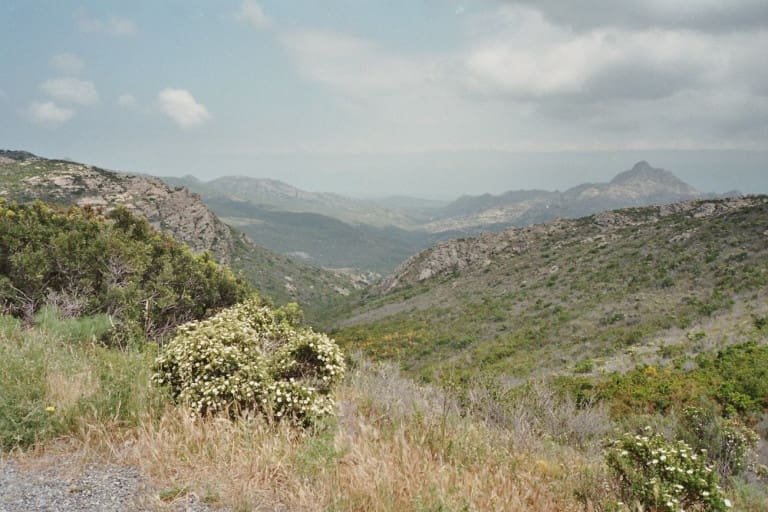I’d like to introduce this piece with a scenario. Suppose someone pointed out that you’d been looking at the climate through a pair of glasses with only one lens? Lifting them off your nose, they then provide you a new pair of glasses with two lenses. Suddenly, parts of the climate you couldn’t see before appear. In addition to the atmosphere, you now see the landscapes around you and the soil beneath your feet, not as helpless victims, but as active drivers of this thing we call climate. Not only that, but you see that at one point, not too long ago, science looked at the climate in just such a manner. It was only later, in the 1980’s, that the glasses with the single lens was put before our eyes and declared the official scientific view.
These are some of the insights gained when you follow the path of Millan’s career and scientific work, though Millan uses different metaphors, referring to a “two-legged” climate understanding versus the one-legged, CO2-only view, the current orthodoxy. He also shows us that water, which lies at the heart of Earth’s climate, “begets water,” that soil is like a “womb” for rain and climate, and vegetation acts as a “midwife.”
I realize I’m throwing out a lot of metaphors here, but with today’s data-driven orthodoxy, metaphors are needed to help us see through the numerical fog. In any case, read on and things will become clear.
Millan Millan and the Mystery of the Missing Mediterranean Storms
When Mediterranean climate expert Millan M. Millan was a boy, his father brought him along on his frequent partridge hunting forays through the dry scrubland of southern Spain known as the maqui, often stopping to show him how to read the surrounding weather, pointing out how a “cloud in a certain place in the morning would move somewhere else by afternoon, triggering a rainstorm.” They’d watch the storms form across the landscape and plan their route home to avoid getting wet. Little could Millan know that 40 years hence he’d be asked by the European Commission to figure out why those afternoon storms, which he and his father so enjoyed tracking across the hillsides, were disappearing throughout the Western Mediterranean Basin, with rivers drying up in their wake.
The future Dr. Millan, Head of the Center for the Mediterranean Environment, degreed in Fluid Mechanics, Industrial Engineering, Aerospace Science, Atmospheric Physics and Spectroscopy, Synoptic Meteorology and Weather Forecasting, would indeed figure out why the summer storms were failing. “Land-use perturbations (mining, industrial expansion, deforestation, paving) that accumulated over historical time and greatly accelerated in the last 30 years” had rendered the land incapable of supporting the region’s climate. The storms were vanishing because the land was vanishing, Millan showed, with far reaching implications for our understanding of the human causes of climate change and how we should respond.
Though hailed by Nobel laureate Paul Crutzen as the most significant finding for climate change in twenty years and published in the American Meteorological Association’s Journal of Climate and others,1,2 his work was effectively ignored by mainstream climate science, proving as Millan put it, “incommodious.” The CO2-oriented, global computer models that came to dominate climate science couldn’t see the local, land-level processes Millan uncovered. Politicians, with their pet building projects and “growth” mandate, ran from them.
Millan isn’t the only scientist raising the alarm about “land change” as a human cause of climate change,3,4 but at 82 he has been around the longest, long enough to remember a time when science held what he terms a “two-legged” view of climate, with a leg for atmospheric carbon and the greenhouse effect, and a leg for land disturbance and hydrologic effects (water cycles.) By researching past climate reports, I’ve been able to verify this,5,6 leading to another mystery: what happened to the two-legged understanding of climate? As it turns out, Millan’s story answers this mystery also, as we will see.
The boy, whose father pointed to his destiny and who went on to deftly met it, nonetheless feels defeated. “I failed, for all of us,” he wrote me once. And indeed, today’s climate narrative completely leaves out Millan’s work. But I don’t think the story is over. The wheel of science is moving toward Millan’s understanding, not away, and the scientific case for a two-legged view of climate just keeps building. Now, in fact, is the perfect time to tell his story.
Shared with permission from Rob Lewis, writer, activist, and member of Bio4Climate’s Leadership Team since 2021. This article was originally published on Resilience.org on July 17, 2023. Read the original article here.

Rob Lewis is a poet, writer and activist working to give voice to the more-than-human world. His writings have appeared in Resilience, Dark Mountain, Atlanta Review, Counterflow and others, as well as the anthologies Singing the Salmon Home and For the Love of Orcas. He’s also author of the poetry/essay collection The Silence of Vanishing Things. Lately, he’s been writing about how the climate isn’t a machine with an engineering fix, but a living system that only can only be healed through restraint and restoration, at https://theclimateaccordingtolife.substack.com/
Sources:
- Millan, Millan et al, 2005, Climatic Feedbacks and Desertification: The Mediterranean Model, Journal of Climate, Volume 18, pp. 684-70.
- Millan, Millan, 2014, Extreme Meteorological Events and Climate Prediction in Europe, Journal of Hydrology, Volume 518, pp.206-224.
- Pielke, Roger Sr., 2009, Climate Change: The Need to Consider Human Forcings Besides Greenhouse Gases, Eos, Vol. 90, No. 45, pp. 413-414.
- Schwarzer, Stefan, 2021, Working with Plants, Soils and Water to Cool the Climate and Rehydrate Earth’s Landscapes, UNEP Foresight Brief, pp. 1-7.
- 1971, Inadvertent Climate Modification: Study of Man’s Impact on Climate, MIT.
- 1979, Proceedings of the World Climate Conference: Conference of Experts on Climate and Mankind, World Meteorological Association.
Photo: Low maquis in Corsica (Own work, CC BY-SA 3.0, https://commons.wikimedia.org/w/index.php?curid=181723)

